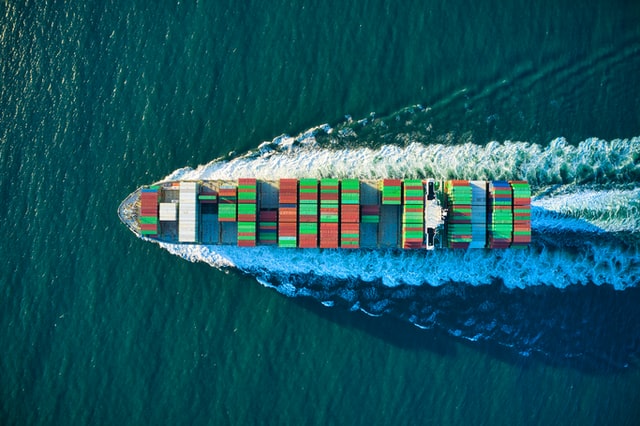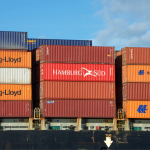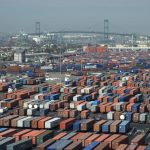7 Biggest Supply Chain Disasters and What Can We Learn From Them
This is a guest post by Timothy Barton.

A good supply chain is predictably critical. Without goods, no one can grow and thrive. This, of course, causes imports and exports to grow in importance in turn. Fresh goods, goods not available in the local market, are all the more attractive and lucrative. However, as with all ventures, there is a risk – failure of the supply chain leads to massive losses of time, money, and resources. So, how does this happen? What are the biggest supply chain disasters that could strike your business and set you back?
Here are seven such disasters and what you can do to be ready for them or avoid them altogether.
1. No Alternative Suppliers
Quite often, supply chain disasters do not happen because of a lack of transportation. Some retailers even get their own ships nowadays. So, while failing to secure space on ships does happen, businesses geared towards export and import are less likely to fall behind due to this. However, a sudden lack of supplies causes the biggest disasters. Such a condition then leads to failed contracts, massive losses, and potential bankruptcy. And yet, some businesses still fail to secure enough backup suppliers!
So, the main thing to take away from this is to always have something to fall back on. The ideal solution is to find suppliers local to the point of take-off, where your shipping routes begin. If you can secure their assurance that they can bail you out of a bad spot, it is worth paying at a premium if the day you have to comes.
2. Long Lead Times
This is one of the supply chain disasters which are harder to tackle and more insidious. A business can be slowly whittled down into the ground by delays, minor problems, and getting smacked by fines for those same delays. The leading causes of this can be an insistence on cheaper producers when getting goods from them is a long and arduous process, a reluctance to spend money on better modes of transport, or even international issues cropping up if one is unlucky. A good example is the recent COVID case shutting down a major Chinese port terminal.
However, what we can learn from this is to always have an alternative way to ship your goods out. Just like our previous entry, backup options are vital, even if they are more expensive.
3. Bad Forecasts
This particular disaster is difficult to guard against. If you make a bad forecast and invest all of your money into importing or exporting goods you believe will be popular only to find they are unwanted, it can cost you your entire fortune. The good news is, this is relatively easy to learn from and circumvent. The primary cause of this disaster is trusting unverified and sketchy information.
One should always perform as much research as possible instead of jumping at potential opportunities.
4. Reckless Risk Taking
The last entry neatly ties into this one! Reckless risk-taking has caused more disasters in supply chains than anyone cares to admit. And examples stretch all the way back to the first import and export businesses to ever exist.
What we can do to learn from this is follow the following guidelines: Never take on more orders than you are sure you can handle. Never trust a supplier who makes unrealistic promises of production. Always give yourself a little extra time for your cargo to arrive instead of risking the attempt of staying competitive by promising extremely short delivery times. And never, ever, stake most of your fortune and business on large amounts of cargo you are desperately counting on to earn it all back.
5. Cutting Costs
Another disaster to protect yourself from! Where is the line between frugality and refusing to spend enough money to keep your business running correctly? Unfortunately, it is not quite an easy question to answer. Many companies invited ruin on themselves by not spending enough money to ensure the quality and safety of their shipments. And a lot more will be ruined by the same in the future.
The best way to learn from this is to set a baseline for your product’s quality and transportation and never allow yourself to slip under it, no matter the circumstances.
6. Subpar Storage Facilities
When discussing the biggest supply chain disasters and what we can learn from them, we must mention poorly handled storage. It is a well-known enough story, yet one that few choose to learn from! A company or a business buys merchandise. They get it to storage. The storage is not up to par for their needs. The inventory gets spoiled, ruined entirely. Now, the business has paid for the supplies, but they are failing to deliver them, making this a double expense caused by negligence.
This is why you need to make sure to have good, climate-controlled storage on your chosen mode of transport and your warehouses! Otherwise, your export/import business stands to lose too much. You should also always approach signing storage rental agreements well in advance of the date when you need them, so you can handle the paperwork with ease. If you allow yourself enough time, you will eliminate or at least reduce the chances of things going awry.
7. Choosing the Wrong Transport Methods
Sometimes, it might seem cheaper to rely on boats. However, with the current need to protect your supply chain from likely ILWU port disruption, the costs could surge, something shippers have been seeing plenty of over the last year. This is just one example of how disasters can happen when you do not carefully consider your transport mode! And that is completely disregarding issues COVID can cause that we’ve already mentioned.
Make sure to weigh the safety, reliability, and cost in equal measure. Do not be afraid to pay more if the new, better way to export or import your goods can speed up the process and make it possible for you to make more trips in the same period. It would only boost your earnings in the long run.
Final Word
This marks the ending of the list of biggest supply chain disasters and what we can learn from them. As long as you keep in mind the facts that you should never let yourself be without a backup plan, that under-spending is as bad as overspending, and that you should keep innovating your transportation methods, you should avoid suffering major disaster!
This was a guest post by Timothy Barton.
Author Bio:

Timothy Barton is an experienced blogger, travel enthusiast, and beginner entrepreneur. He likes to work on pieces that deal with business and the import and export of goods. He hopes his years of experience in research have prepared him for the tasks ahead.



